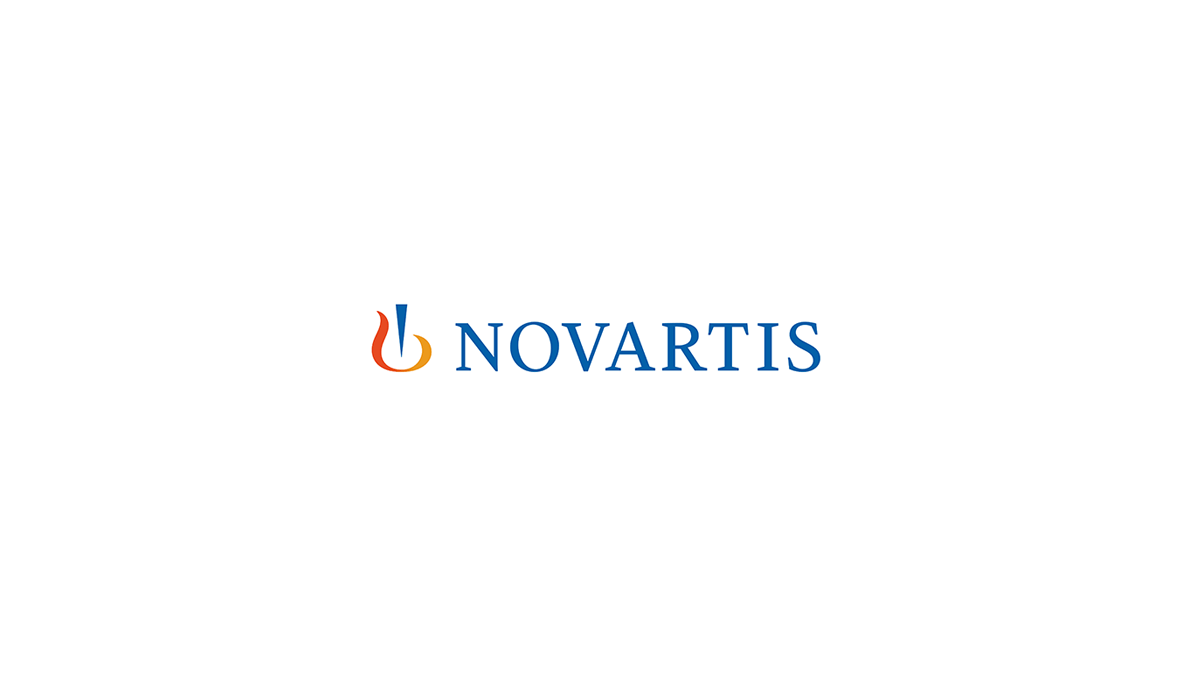Far from winding down, it seems as though several leading camera brands could see out 2025 with a bang. Reliable sources from inside the rumor mill are teasing info about upcoming camera gear from Canon, Sony, Leica, DJI, Fujifilm and more.
I…

Far from winding down, it seems as though several leading camera brands could see out 2025 with a bang. Reliable sources from inside the rumor mill are teasing info about upcoming camera gear from Canon, Sony, Leica, DJI, Fujifilm and more.
I…

Findings from the CAPItello-281 trial (NCT04493853) presented at the 2025 European Society for Medical Oncology (ESMO) Congress showed that the combination of the oral AKT inhibitor capivasertib (Truqap) plus abiraterone acetate, prednisone, and androgen deprivation therapy (ADT) extended radiographic progression-free survival (rPFS) by 7.5 months compared with abiraterone acetate, prednisone, ADT, and placebo in patients with PTEN-deficient de novo metastatic hormone-sensitive prostate cancer (HSPC).1
After a median follow-up of 18.4 months, the median rPFS with the addition of capivasertib was 33.2 months (95% CI, 25.9–44.2) compared with 25.7 months (95% CI, 22.0–29.9) for placebo (HR, 0.81; 95% CI, 0.66–0.98; P = .034). Median overall survival (OS) was not yet reached at the time of the analysis for either arm. There had been 267 events at the time of the assessment, with 129 in the capivasertib arm and 138 in the placebo group (HR, 0.90; 95% CI, 0.71–1.15; P = .401).
“The primary end point was met, showing a statistically significant rPFS benefit with the combination of capivasertib and abiraterone, with consistent benefits observed across clinical end points,” lead investigator Karim Fizazi, MD, PhD, a medical oncologist at Institut Gustave Roussy and Centre Oscar Lambret, said during a presentation of the results. “The rPFS in the control arm was only 25.7 months, highlighting the poor prognosis of a PTEN population.”
In the CAPItello-281 trial, 1012 patients were treated with abiraterone acetate at 1000 mg with prednisone at 5 mg daily plus ADT. Patients were randomly selected to receive capivasertib at 400 mg twice daily for 4 days on and 3 days off (n = 507) or a matched placebo (n = 505). PTEN deficiency was defined as more than 90% of malignant cells with no specific cytoplasmic staining by IHC. Of those screened, approximately 25% matched these requirements.
The primary end point of the study was investigator-assessed rPFS. Secondary end points included overall survival (OS). The analysis presented at ESMO was the final analysis for rPFS. A final OS analysis is still planned.
The baseline characteristics were similar between groups. In the capivasertib and placebo arms, respectively, the median ages were 67 and 68 years. The total Gleason score was 8 or more for 78.5% and 79% of patients and the disease risk was high for 61.3% and 65.9% of those in the capivasertib and placebo groups, respectively. The primary location of disease metastases was the bone for 91.1% and 92.5% in the investigational and control arms, respectively. Nearly two-thirds of patients had an ECOG performance score of 0 with the remainder having a score of 1. Nearly three-fourths of patients had high volume disease.
“Consistent with the poor prognosis of this PTEN-deficient prostate cancer population, most patients had high-risk, high-volume, high Gleason score disease,” said Fizazi.
In prespecified subgroup analyses, similar improvements in rPFS were seen with the addition of capivasertib, although none passed the bar for statistical significance. In those with high-volume disease with visceral metastases, the hazard ratio was 0.77 favoring the capivasertib arm (95% CI, 0.52–1.14) and in those with a Gleason score of 8 or more the hazard ratio was 0.82 (95% CI, 0.65–1.02). In those with a score lower than 8, the hazard ratio was 1.06 (95% CI, 0.66–1.69).
The time to next treatment was 37.0 months with capivasertib compared with 28.5 months with placebo (95% CI, 0.75–1.11). The median symptomatic skeletal event-free survival was 42.5 months with capivasertib compared with 37.3 months for placebo. Events for this end point included pathological fracture, spinal cord compression, use of radiation, surgical intervention, and death. There were 150 of these events in the capivasertib group and 176 in the placebo group (HR, 0.82; 95% CI, 0.66–1.02; P = .079).
“Roughly half of patients are still on drug and another analysis of overall survival is planned at another time cutoff,” Fizazi said. “There was a numerical improvement of 5.2 months prolongation in event-free survival in the capivasertib arm.”
The time to castration resistance was 29.5 months in the capivasertib group and 22.0 months for placebo (HR, 0.77; 95% CI, 0.63–0.94). For this study, Fizazi noted, castration resistance was defined as radiographic disease progression, PSA progression, and development of a skeletal event. The median time to PSA progression was not calculable at the time of the analysis, with 60 events recorded in the capivasertib arm compared with 82 in the placebo group (HR, 0.73; 95% CI, 0.52-1.01). Pain progression was still too early to measure, as too few events had occurred.
“Interestingly, the Kaplan-Meier curves for time to PSA progression defined by PCWG3 are much higher than those for time to castration resistance, indicating that many patients with PTEN loss tend to first experience a detrimental clinical event, such as an imaging-based progression or bone mobility, prior to a PSA rise of greater than 25%,” said Fizazi.
Additional analyses were completed looking at different PTEN expression levels, following the suggestion of an impact from other studies looking at AKT inhibitors. Of those with PTEN loss on 95% of cells or more, the median rPFS was 33.2 months with capivasertib and 22.7 months with placebo (HR, 0.75; 95% CI, 0.60-0.94). When PTEN loss was 99% or more, the median rPFS was 34.1 months with capivasertib vs 22.4 months for placebo (HR, 0.71; 95% CI, 0.52-0.97). When there was 100% PTEN loss, the median rPFS was 34.1 months compared with 22.1 months for capivasertib and placebo, respectively (HR, 0.68; 95% CI, 0.48–0.96).
“In the capivasertib arm, we see strongly consistent rPFS irrespective of the degree of PTEN deficiency; however, with increasing PTEN deficiency there is worsening prognosis in the control arm,” said Fizazi. “The same phenomenon of increasing treatment effect was also seen for overall survival.” For those with 100% PTEN loss, the early hazard ratio for OS was 0.77 (95% CI, 0.51–1.14).
The increase in treatment benefit was also seen across all secondary end points, when assessing higher levels of PTEN loss. At 100% PTEN loss, the hazard ratio for symptomatic skeletal event-free survival was 0.70 favoring capivasertib (95% CI, 0.48–1.01). For time to castration resistance the hazard ratio was 0.63 (95% CI, 0.45–0.89) and for time to PSA progression it was 0.55 (95% CI, 0.29–1.01). “It was exactly the same trend,” Fizazi said.
A grade 3 or higher adverse event (AE) was experienced by 67% of patients treated with capivasertib compared with for 40.4% of those in the placebo arm. A serious AE was experienced by 42.5% of those in the capivasertib group compared with for 26% of patients in the placebo arm. There was 36 AEs leading to death in the investigational arm compared with 26 in the placebo group.
Adverse events led to discontinuation of capivasertib or placebo for 18.3% and 4.8% of patients, respectively. For capivasertib and placebo, respectively, dose interruptions were required for 62.8% and 26.8% of patients and dose reductions were needed for 29% and 3.6% of patients. An AE led to discontinuation of abiraterone acetate for 9.5% and 5.4% of patients in the investigational and control arms, respectively.
The most common AEs in the capivasertib arm and placebo group, respectively, were diarrhea (51.9% vs 8.0%), hyperglycemia (38% vs 12.9%), rash (35.4% vs 7%), anemia (23.9% vs 12.7%), and hypokalemia (22.1% vs 12.7%). “Adverse events typical of abiraterone, such as hypertension, hypokalemia, and transaminase increase, were even between arms,” said Fizazi.
In early 2025,2 another study exploring capivasertib in prostate cancer was halted following an interim analysis that showed a potential lack of efficacy. This study, CAPItello-280 (NCT05348577), was exploring capivasertib in combination with docetaxel and ADT.
Outside of prostate cancer, capivasertib has gained FDA approval in combination with fulvestrant (Faslodex) for the treatment of patients with hormone receptor–positive, HER2-negative, locally advanced or metastatic breast cancer harboring 1 or more PIK3CA, AKT1, or PTEN alterations following progression on at least 1 endocrine-based regimen in the metastatic setting or recurrence on or within 12 months of completing adjuvant therapy.3

Basel, October 19, 2025 – Novartis today presents new Pluvicto™ (lutetium (177Lu) vipivotide tetraxetan) data from the Phase III PSMAddition trial in a Presidential Symposium at the European Society for Medical Oncology (ESMO) Congress 2025.
Pluvicto plus standard of care (SoC) (androgen receptor pathway inhibitor [ARPI] + androgen deprivation therapy [ADT]) demonstrated a statistically significant and clinically meaningful improvement in radiographic progression-free survival (rPFS), reducing the risk of radiographic progression or death by 28% (HR 0.72; 95% CI: 0.58, 0.90) versus SoC alone in patients with prostate-specific membrane antigen (PSMA)+ metastatic hormone-sensitive prostate cancer (mHSPC)1.
Results also show an early positive trend in overall survival (OS) in patients treated with Pluvicto plus SoC (HR 0.84; 95% CI: 0.63, 1.13); follow-up will continue until data are mature1. More patients achieved a complete response versus SoC alone (57.1% vs. 42.3%) and the overall response rate (ORR) was numerically higher in the Pluvicto plus SoC arm (85.3% vs. 80.8%)1. Pluvicto delayed time to progression to metastatic castration-resistant prostate cancer (mCRPC) (HR 0.70; 95% CI: 0.58, 0.84)1. The rPFS benefit was consistent across pre-specified subgroups1.
“In metastatic prostate cancer, choosing the most efficacious treatment early is crucial, even at initial diagnosis,” said Scott T. Tagawa, MD, a professor of medicine at Weill Cornell Medicine and a medical oncologist at NewYork-Presbyterian/Weill Cornell Medical Center. “These findings suggest that combining 177Lu-PSMA-617 with standard of care hormonal therapy offers patients more time without disease progression, a safety profile with adverse events that are most often low grade and managed with supportive care, and an encouraging trend in overall survival.”
“These results reinforce the potential for Pluvicto, a radioligand therapy that delivers treatment directly to target cells, to change how we treat metastatic prostate cancer,” said Shreeram Aradhye, President, Development and Chief Medical Officer, Novartis. “With significant benefit now shown across multiple disease stages, Pluvicto is redefining the standard of care. The strength of these results reflects our deep commitment to patients with prostate cancer and our leadership in radioligand therapy.”
The safety profile and tolerability of Pluvicto were consistent with its established profile in PSMAfore and VISION1,4,5. Grade ≥3 adverse events (AEs) were reported in 50.7% of patients in the Pluvicto plus SoC arm, compared to 43% on SoC alone1. The most common all-grade AEs were dry mouth, fatigue, nausea, hot flush and anemia1.
PSMAddition marks the third positive Phase III trial with Pluvicto1,4,5. Building on the significant benefit demonstrated in PSMAfore, which led to the US Food and Drug Administration (FDA) approval in pre-taxane mCRPC in March 2025, these new results strengthen the evidence base for Pluvicto and demonstrate its potential to improve outcomes in an even earlier stage of metastatic prostate cancer1,4,6. Novartis plans to submit these data to regulatory authorities before end of year.
About unmet need in mHSPC
Approximately 172,000 men are diagnosed with mHSPC each year across the US, China, Japan, France, Germany, Italy, Spain and the United Kingdom1. Most patients progress to mCRPC, typically within 20 months2,3,7,8. Progression to mCRPC is associated with significantly worse outcomes, including increased patient burden, worse quality of life and life expectancy less than two years9,10. More than 80% of patients with prostate cancer highly express the PSMA biomarker, making it a promising therapeutic target11–15.
About PSMAddition
PSMAddition (NCT04720157) is a Phase III, open-label, prospective, 1:1 randomized study comparing the efficacy and safety of Pluvicto in combination with SoC (ARPI + ADT) vs. SoC alone in adult patients with PSMA+ mHSPC16. The primary endpoint is rPFS, defined as the time to radiographic progression by PCWG3-modified RECIST V1.1 (as assessed by BIRC) or death16. The key secondary endpoint of OS is defined as time to death due to any cause16. The study remains ongoing and a total of 1,144 patients with mHSPC across 20 countries have been randomized in the trial16.
About Pluvicto™ (lutetium (177Lu) vipivotide tetraxetan)
Pluvicto is an intravenous RLT that combines a targeting compound (a ligand) with a therapeutic radionuclide (a radioactive particle, in this case lutetium-177)5,17. After administration into the bloodstream, Pluvicto binds to PSMA-expressing target cells, including prostate cancer cells that express PSMA, a transmembrane protein5,17. Once bound, energy emissions from the radioisotope damage the target cells and nearby cells, disrupting their ability to replicate and/or triggering cell death17.
Pluvicto is the only PSMA-targeted agent approved for PSMA+ mCRPC and is the first RLT to demonstrate a clinical benefit for patients with PSMA+ mHSPC in a Phase III trial1. Novartis is investigating Pluvicto in oligometastatic prostate cancer, an earlier stage of disease, in the PSMA-DC trial (NCT05939414).
Novartis and radioligand therapy (RLT)
Novartis is reimagining cancer care with RLT for patients with advanced cancers. By harnessing the power of targeted radiation and applying it to advanced cancers, RLT is designed to deliver treatment directly to target cells, anywhere in the body18,19. Novartis is investigating a broad portfolio of RLTs, exploring new isotopes, ligands and combination therapies to look beyond gastroenteropancreatic neuroendocrine tumors (GEP-NETs) and prostate cancer and into breast, colon, lung and pancreatic cancer. Novartis has established global expertise, with specialized supply chain and manufacturing capabilities across its network of RLT production sites. To support growing demand for RLTs, we have active production capabilities in Millburn (NJ), Zaragoza (Spain), Ivrea (Italy) and a state-of-the-art facility in Indianapolis (IN). Expansions are ongoing in Carlsbad (CA), where Novartis is establishing its third US-based RLT manufacturing site to support expanded use of RLTs, and Sasayama (Japan) to create resiliency and optimize delivery of medicines to patients.
Disclaimer
This press release contains forward-looking statements within the meaning of the United States Private Securities Litigation Reform Act of 1995. Forward-looking statements can generally be identified by words such as “potential,” “can,” “will,” “plan,” “may,” “could,” “would,” “expect,” “anticipate,” “look forward,” “believe,” “committed,” “investigational,” “pipeline,” “launch,” or similar terms, or by express or implied discussions regarding potential marketing approvals, new indications or labeling for the investigational or approved products described in this press release, or regarding potential future revenues from such products. You should not place undue reliance on these statements. Such forward-looking statements are based on our current beliefs and expectations regarding future events, and are subject to significant known and unknown risks and uncertainties. Should one or more of these risks or uncertainties materialize, or should underlying assumptions prove incorrect, actual results may vary materially from those set forth in the forward-looking statements. There can be no guarantee that the investigational or approved products described in this press release will be submitted or approved for sale or for any additional indications or labeling in any market, or at any particular time. Nor can there be any guarantee that such products will be commercially successful in the future. In particular, our expectations regarding such products could be affected by, among other things, the uncertainties inherent in research and development, including clinical trial results and additional analysis of existing clinical data; regulatory actions or delays or government regulation generally; global trends toward health care cost containment, including government, payor and general public pricing and reimbursement pressures and requirements for increased pricing transparency; our ability to obtain or maintain proprietary intellectual property protection; the particular prescribing preferences of physicians and patients; general political, economic and business conditions, including the effects of and efforts to mitigate pandemic diseases; safety, quality, data integrity or manufacturing issues; potential or actual data security and data privacy breaches, or disruptions of our information technology systems, and other risks and factors referred to in Novartis AG’s current Form 20-F on file with the US Securities and Exchange Commission. Novartis is providing the information in this press release as of this date and does not undertake any obligation to update any forward-looking statements contained in this press release as a result of new information, future events or otherwise.
About Novartis
Novartis is an innovative medicines company. Every day, we work to reimagine medicine to improve and extend people’s lives so that patients, healthcare professionals and societies are empowered in the face of serious disease. Our medicines reach nearly 300 million people worldwide.
Reimagine medicine with us: Visit us at https://www.novartis.com and connect with us on LinkedIn, Facebook, X/Twitter and Instagram.
Disclosure: Dr. Tagawa is a paid consultant for Novartis.
References
# # #


At EICMA 2025, British brand Amped Bikes will showcase its range of lightweight offroad electric bikes designed specifically for young riders. The lineup includes the A10, A16, and A20, aimed at children aged 3 to 12 years.

Abstracts presented during the
Brensocatib was approved by the FDA for use in bronchiectasis just this year based on the findings of the ASPEN trial (
An abstract reporting on the effect of brensocatib on sputum NSP concentrations compared with placebo through 52 weeks of treatment and 4 weeks of follow-up was presented during the conference.2 All participants were adult patients from the ASPEN trial and were required to have at least 2 instances of pulmonary exacerbations in the 12 months prior to screening for the trial. Participants were split 1:1:1 for 10-mg brensocatib, 25-mg brensocatib, or a matching placebo. Sputum samples were collected at baseline and weeks 4, 16, 28, 40, 52, and 56, with the last sample being collected 4 weeks after treatment.
There were 105 participants in the 10-mg group, 108 in the 25-mg group, and 115 in the placebo group who were included in the analysis. Neutrophil elastase (NE), cathepsin G (CatG), and proteinase 3 (PR3) were the primary NSPs evaluated and varied between the 3 groups at baseline.
Both groups receiving brensocatib saw a decrease in activity of NE, CatG, and PR3 by the fourth week compared with the placebo group, which did not see any change. The median (range) percent change in the 10-mg and 25-mg groups was –33.7% (–58.8% to 0.0%) and –41.2% (–71.1% to –3.6%), respectively, compared with –4.6% in the placebo group for NE; similar results were found for median change in CatG (–39.7%, –48.1%, and 0.0%, respectively) and PR3 (–27.7%, –58.4%, and 0.0%, respectively). When participants stopped taking treatment, activity returned to baseline.
The authors concluded that active receipt of brensocatib resulted in the reduction of activity in NSP within the first 4 weeks of taking the treatment. The 25-mg dose also resulted in a higher reduction in activity compared with the 10-mg dose.
The second abstract focused on the effect of brensocatib on symptom burden for patients with bronchiectasis with or without pulmonary exacerbations.3 The ASPEN trial had previously found that both the 10-mg and 25-mg doses of brensocatib had reduced the rate of pulmonary exacerbations, the time to first exacerbation, and increased the odds of going without an exacerbation for 52 weeks. This analysis instead focused on how brensocatib affected symptoms of those with bronchiectasis with or without pulmonary exacerbations using the Bronchiectasis Exacerbation and Symptom Tool (BEST).
Participants were all from the ASPEN trial randomized 1:1:1 to 10 mg of brensocatib, 25 mg of brensocatib, or placebo for 52 weeks. Severe exacerbations were defined as those that required intravenous antibiotics or hospitalization. The BEST measurement assessed breathlessness, fatigue, sputum volume, cough, symptoms of the cold or flu, and sputum purulence. These measurements were taken each day until the end of the study. Lower scores indicated fewer symptoms.
There were 784 participants in the group without exacerbations, 879 in the group with any exacerbation, and 194 in the group with severe exacerbations included in the study. Symptom burden was greater in patients with exacerbations compared with those without any exacerbations. Those who used brensocatib had a baseline decrease in BEST score that was greater than those who did not take brensocatib across all subgroups.
Those who took brensocatib had reduced symptom burden 21 days before and after a severe exacerbation compared with placebo, with a mean (SD) peak score increase from baseline of 3.45 (4.1) in the 10-mg group and 3.43 (4.4) in the 25-mg group that was taken 5 to 7 days before the start date of the severe exacerbation. In comparison, the mean peak score increase was 4.07 (4.4) in those who used placebo.
The researchers concluded that symptom burden was reduced in those taking brensocatib of either dose regardless of the occurrence of exacerbations. Those without exacerbations and patients using the 25-mg dose saw the greatest reductions in symptom burden.
References
1. McCormick B. Brensocatib becomes first FDA-approved therapy for bronchiectasis. AJMC®. August 12, 2025. Accessed October 15, 2025.
2. Metersky ML, De-Soyza A, Burgel PR, et al. Effects of brensocatib on neutrophil serine protease levels in patients with noncystic fibrosis bronchiectasis: an analysis of the ASPEN trial. Presented at: CHEST; October 19-22, 2025; Chicago, Illinois.
3. Flume PA, Metersky ML, Mauger D, et al. The effect of brensocatib vs placebo on symptom burden in patients with or without on-study pulmonary exacerbations: a posthoc analysis from the ASPEN trial. Presented at: CHEST; October 19-22, 2025; Chicago, Illinois.
KINSHASA, Oct. 19 (Xinhua) — The World Health Organization (WHO) said Sunday that health authorities could declare the end of the current Ebola outbreak in the Democratic Republic of the Congo (DRC) in early December if no new cases are…

On October 21, 2025, the interstellar object 3I/ATLAS will be exactly on the opposite side of the Sun relative to Earth, constituting a so-called `solar-conjunction’. When you…